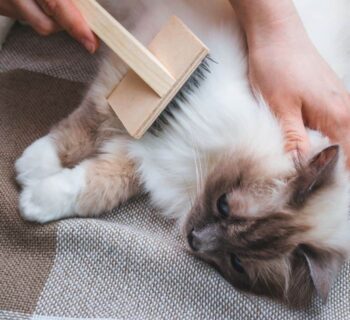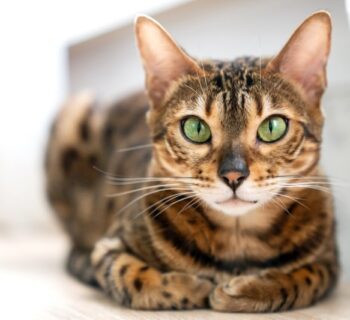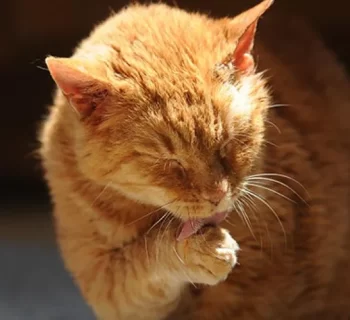Temptations treats for cats are America's number one cat treats and come in a variety of flavors. They may serve as a useful tool for bonding, training, or simply showing your feline buddy more affection. Though, how frequently should you feed your cat these delicious morsels?
Understanding Temptations Cat Treats
Temptations offers a variety of products, its traditional soft and crunchy cat snacks are their most well-known offering. The inside of these treats is soft and creamy, while the outside is crunchy. Additionally, Temptations offers chewy treats called Meaty Bites and creamy, lickable goodies called Creamy Purrr⋅ée.
Temptations is 100% nutritionally complete and balanced for adult cats, according to the product label. This indicates that they offer every nutrient a grown cat requires to be healthy. Nonetheless, it is still advised to give your cat snacks in addition to a nutritious dinner.
There are less than two calories in each Temptations goodie. Up to 15 treats per 10 pounds of body weight should be given daily, according to the product.
The 10% Calorie Rule
Moderation is essential, when it comes to offering treats to pets. Treats should only make up a modest percentage of your cat's diet, according to several vets. Cat treats are generally advised to make up no more than 10% of your cat's daily calorie intake. The remaining 90% need to come from premium cat food that is full of nutrients.
Why Moderation Matters
- Weight Management: Cats who eat too many calories may experience weight issues, much like people. Cats that are overweight or obese run the risk of developing a number of illnesses.
- Balanced Nutrition: A lot of cat treats are incomplete and unbalanced, which means they don't provide all the vital nutrients that cats require, and overindulgence might throw off your cat's nutritional balance which can cause serious health issues.
- Appetite Interference: A cat may begin to avoid their normal diet if they consume too many treats. Cats may stop eating their nutritionally balanced cat food and instead develop a penchant for goodies.
How to Incorporate Temptations Responsibly
- Calculate Daily Calorie Needs: Work with your veterinarian to determine your cat’s daily caloric needs. This will depend on your cat’s age, weight, activity level, and overall health.
- Determine Treat Allowance: Calculate 10% of your cat’s daily calorie needs to determine how many calories can come from treats.
- Count the Treats: Since each Temptations treat has fewer than 2 calories, you can figure out how many treats fit within the 10% allowance.
- Factor in Other Treats: Remember to include any other treats or snacks your cat receives when calculating the total treat calories.
- Adjust Meal Portions: If you give your cat treats, adjust their regular meal portions to avoid overfeeding. If you are giving these treats as your cat’s main meal, ¼ cup of Temptations treats can replace ¼ cup of cat food.
Tips for Using Temptations Effectively
- Training Rewards: Use Temptations as a reward during training sessions.
- Positive Reinforcement: Give your cat a treat when they exhibit good behavior.
- Bonding: Offer a treat during cuddle time to strengthen your bond. Some cat owners found that their cats loved Temptations Creamy Purrrr-ée Cat Treats. The best way to administer this treat was to allow the cat to lick it from the packaging.
- Enrichment: Place a few treats in a treat-dispensing toy to keep your cat entertained.
- Picky Eaters: Sprinkle a few treats on top of their food to make it more appealing.
When to Avoid Temptations
- Allergies or Sensitivities: If your cat has any known allergies or sensitivities, check the ingredient list carefully. Some Temptations treats contain common allergens like corn and meat by-products.
- Medical Conditions: If your cat has a medical condition, such as diabetes or kidney disease, talk to your vet before offering treats.
- Weight Issues: If your cat is overweight or obese, limit treats and focus on a weight management plan recommended by your vet. One should limit treats because they can interfere with a cat's appetite for regular food.
- Grain-Free Diet: Most Temptations recipes use grain in some form, so if your cat is on a grain-free diet, these may not be the right choice.
Conclusion
Temptations are undoubtedly one of the best cat treats and can be a delightful addition to your feline’s life when given in moderation.You may use these treats to strengthen your relationship and provide your cat good reinforcement without endangering their health. If you are aware of their nutritional value, adhere to the 10% calorie guideline, and take into account their specific needs. Always consult with your veterinarian for personalized advice on your cat’s diet and treat options to ensure they live a happy and healthy life.
FAQs
Are Temptations nutritionally complete?
Temptations are advertised as 100% nutritionally complete and balanced for adult cats, providing all the necessary nutrients for maintenance. However, they should be given in moderation, with the majority of a cat's diet consisting of high-quality cat food. Treats should only make up to 10% of a cat's daily calorie intake to maintain a balanced diet.
How many Temptations can I give my cat per day?
The recommended amount is up to 15 treats per 10 pounds of body weight per day. However, it's crucial to factor in your cat’s daily caloric needs and ensure treats do not exceed 10% of their total calorie intake. Adjust meal portions accordingly to avoid overfeeding and maintain a healthy weight.
Are there any health risks associated with Temptations?
When given in moderation, Temptations are generally safe for most cats. However, overfeeding can lead to weight gain, unbalanced nutrition, and appetite interference. Cats with allergies, medical conditions, or those on specific diets may need to avoid certain Temptations flavors or ingredients.
Can I use Temptations for training my cat?
Yes, Temptations can be an effective tool for training due to their appealing taste and texture. Use them as positive reinforcement to reward desired behaviors and make training sessions more engaging. Be sure to factor the treat calories into your cat's daily allowance to prevent overfeeding.
What are some healthy alternatives to Temptations?
Consider homemade treats made from cooked chicken, fish, or vegetables, or commercial treats with limited ingredients and no artificial additives. Some cats may also enjoy small amounts of certain fruits and vegetables, such as cooked sweet potato or steamed green beans. Always consult with your vet before introducing new foods.









